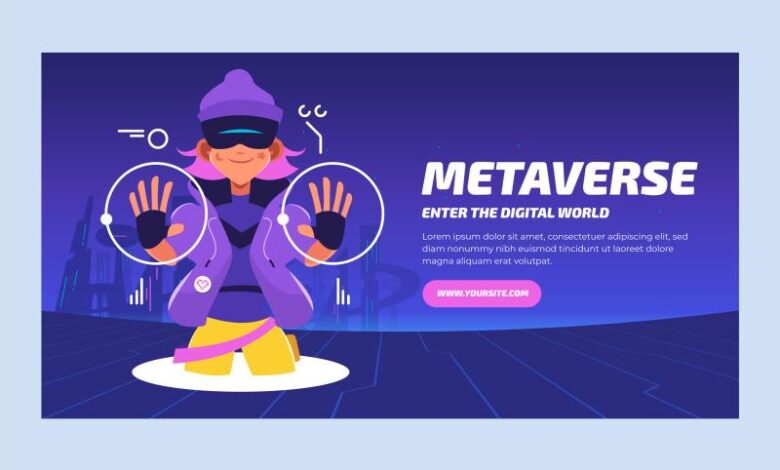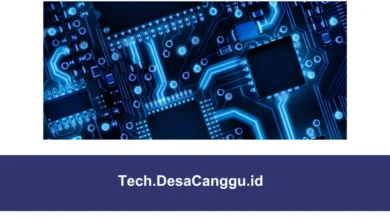From Concept to Reality: Estimating Metaverse Development Costs
metaverse development cost

The metaverse, a collective virtual shared space created by the convergence of virtually enhanced physical reality and physically persistent virtual reality, is rapidly evolving from a futuristic concept to an imminent reality. Companies and individuals are investing heavily in the development of metaverse environments, seeking to create immersive, interactive, and expansive digital worlds. However, developing a metaverse is a complex and costly endeavor. This article aims to provide a comprehensive overview of the factors influencing metaverse development cost, offering insights into budgeting for this ambitious venture.
Understanding the Metaverse
Before delving into the costs associated with metaverse development, it’s crucial to understand what the metaverse entails. The metaverse can be seen as the next evolution of the internet, where users interact within a fully immersive digital environment. This environment is not limited to virtual reality (VR) but also includes augmented reality (AR), mixed reality (MR), and other immersive technologies. The metaverse can host a wide range of activities, from social interactions and entertainment to business operations and education.
Key Components of Metaverse Development
Developing a metaverse requires a combination of various technologies and components. Here are the primary elements involved:
- Infrastructure: The backbone of the metaverse includes servers, data centers, and cloud computing resources that ensure seamless performance and scalability.
- 3D Modeling and Design: Creating realistic and interactive 3D environments, avatars, and objects requires advanced design tools and expertise in 3D modeling.
- VR/AR Hardware: Headsets, sensors, haptic devices, and other hardware components are essential for delivering immersive experiences.
- Software Development: Building the software infrastructure, including game engines, rendering systems, and networking protocols, is fundamental to metaverse development.
- Content Creation: The metaverse thrives on rich and diverse content, including games, experiences, virtual goods, and user-generated content.
- Security and Privacy: Ensuring the security and privacy of users and their data is paramount in a virtual world.
- Integration with Blockchain and NFTs: Many metaverse projects leverage blockchain technology and non-fungible tokens (NFTs) to create digital assets, enforce ownership, and enable transactions.
Factors Influencing Metaverse Development Costs
The cost of developing a metaverse can vary significantly based on several factors. Let’s explore these factors in detail:
1. Scale and Complexity
The scale and complexity of the metaverse project are primary determinants of the overall cost. A simple virtual environment with limited interactivity will cost significantly less than a fully immersive, expansive world with high levels of detail and interactivity. Factors to consider include:
- Number of Users: A metaverse designed to accommodate thousands or millions of concurrent users will require substantial infrastructure and optimization.
- Level of Detail: High-resolution graphics, realistic physics, and intricate details in the virtual environment add to the development costs.
- Interactivity: Complex interactions, such as multiplayer games, virtual commerce, and social interactions, increase the development effort and cost.
2. Technology Stack
The choice of technology stack plays a crucial role in determining development costs. Key considerations include:
- Game Engines: Popular game engines like Unity and Unreal Engine offer powerful tools for metaverse development but come with licensing fees and associated costs.
- Custom Development: Custom-built solutions tailored to specific requirements can be more expensive than using off-the-shelf platforms.
- Cloud Services: Cloud computing services, such as AWS, Azure, or Google Cloud, provide scalable infrastructure but incur ongoing operational costs.
3. Development Team
The expertise and size of the development team significantly impact costs. A typical metaverse development team may include:
- 3D Artists and Designers: Skilled professionals who create the visual elements of the metaverse.
- Software Developers: Programmers who build the underlying software infrastructure.
- VR/AR Specialists: Experts in immersive technologies who ensure compatibility with VR/AR hardware.
- Blockchain Developers: Specialists who integrate blockchain technology and develop smart contracts for NFTs and virtual assets.
- Project Managers: Professionals who oversee the development process and ensure timely delivery.
4. Content Creation
Content is the lifeblood of the metaverse, and creating diverse and engaging content can be costly. This includes:
- Virtual Environments: Designing and modeling expansive virtual worlds.
- Avatars and Characters: Creating customizable and expressive avatars.
- Virtual Goods: Developing digital assets, such as clothing, accessories, and virtual real estate.
- Experiences and Games: Building interactive experiences and games within the metaverse.
5. Security and Privacy
Ensuring robust security and privacy measures is essential in a virtual environment where users interact, transact, and share personal information. This involves:
- Data Encryption: Protecting user data through encryption techniques.
- Authentication: Implementing secure authentication methods to prevent unauthorized access.
- Fraud Prevention: Developing systems to detect and prevent fraudulent activities.
6. Marketing and Launch
Launching a metaverse project requires a significant marketing effort to attract users and generate interest. This includes:
- Branding and Promotion: Creating a strong brand identity and promoting the metaverse through various channels.
- Community Building: Engaging with potential users and building a community around the metaverse.
- Partnerships and Collaborations: Forming strategic partnerships with other companies and platforms to enhance the metaverse ecosystem.
Estimating Metaverse Development Costs
Given the multitude of factors involved, estimating the cost of developing a metaverse can be challenging. However, we can provide some general guidelines based on industry trends and expert insights.
Small-Scale Metaverse
A small-scale metaverse project with limited features and interactivity may cost between $100,000 and $500,000. This includes basic infrastructure, simple 3D environments, and minimal content creation.
Medium-Scale Metaverse
A medium-scale metaverse with more advanced features, moderate interactivity, and a larger user base may cost between $500,000 and $2 million. This includes more detailed environments, a wider range of virtual goods, and enhanced security measures.
Large-Scale Metaverse
A large-scale, fully immersive metaverse with high levels of interactivity, extensive content, and support for millions of users can cost anywhere from $2 million to $10 million or more. This includes advanced infrastructure, high-resolution graphics, complex interactions, and comprehensive security and privacy measures.
Future Trends and Considerations
As the metaverse continues to evolve, several trends and considerations will shape the future of metaverse development costs:
1. Advancements in Technology
Advancements in technology, such as improved VR/AR hardware, more efficient game engines, and enhanced blockchain solutions, will impact development costs. These advancements may lead to reduced costs in some areas while increasing them in others.
2. User-Generated Content
The rise of user-generated content will play a significant role in shaping the metaverse. Platforms that encourage and support user-generated content can reduce development costs by leveraging the creativity and contributions of their users.
3. Interoperability
Interoperability between different metaverse platforms will become increasingly important. Ensuring seamless integration and interaction between various virtual worlds will require additional development efforts and costs.
4. Monetization Strategies
Monetization strategies, such as virtual real estate sales, in-app purchases, and advertising, will influence the overall cost and revenue potential of metaverse projects. Developing robust monetization mechanisms will require additional investment.
5. Regulatory and Ethical Considerations
As the metaverse grows, regulatory and ethical considerations will come to the forefront. Ensuring compliance with regulations, protecting user rights, and addressing ethical concerns will add to the development costs.
Conclusion
Developing a metaverse is a complex and costly endeavor that requires careful planning, substantial investment, and a multidisciplinary approach. The costs associated with metaverse development are influenced by factors such as scale and complexity, technology stack, development team, content creation, security and privacy, and marketing and launch efforts. By understanding these factors and estimating the potential costs, companies and individuals can make informed decisions and effectively budget for their metaverse projects.
As the metaverse continues to evolve, staying abreast of technological advancements, user preferences, and industry trends will be crucial for successful development and sustainable growth. The journey from concept to reality in the metaverse is challenging, but with the right resources and strategic approach, the possibilities are boundless.



